Not all field-grown bonsai are ready for refinement work when they come out of the ground. One of my trident maples is a good example of this. Although the trunk has reached the desired thickness, there are a number of steps to take that will set the tree up for refinement down the road.
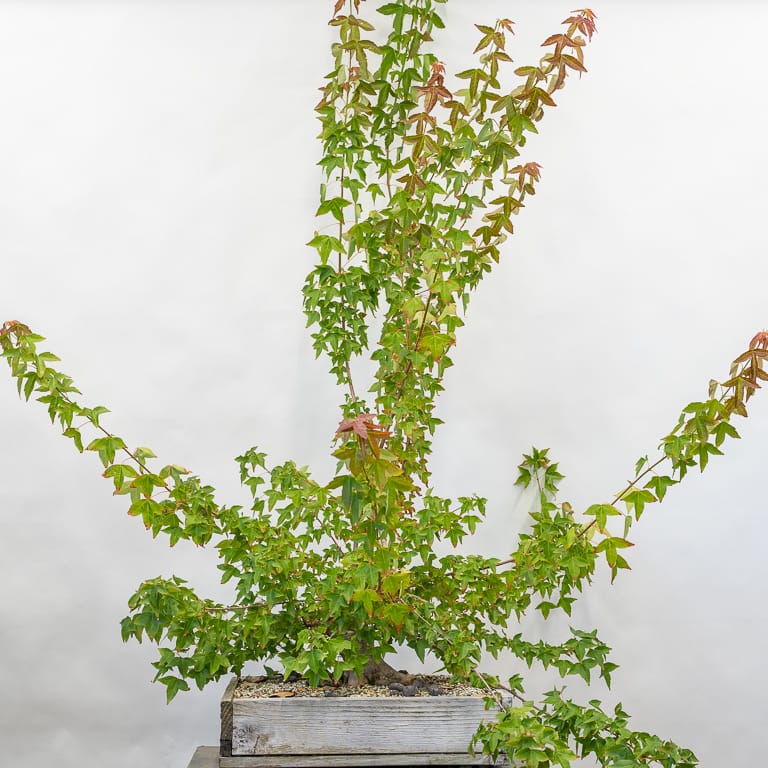
Trident maple
Now is a good time of year to do this work, so the timing coincided well with Andrew Robson’s visit to my garden. Andrew got started on the tree by defoliating all but a few of the branches. Defoliating a branch is good way to reduce its vigor and to encourage ramification.
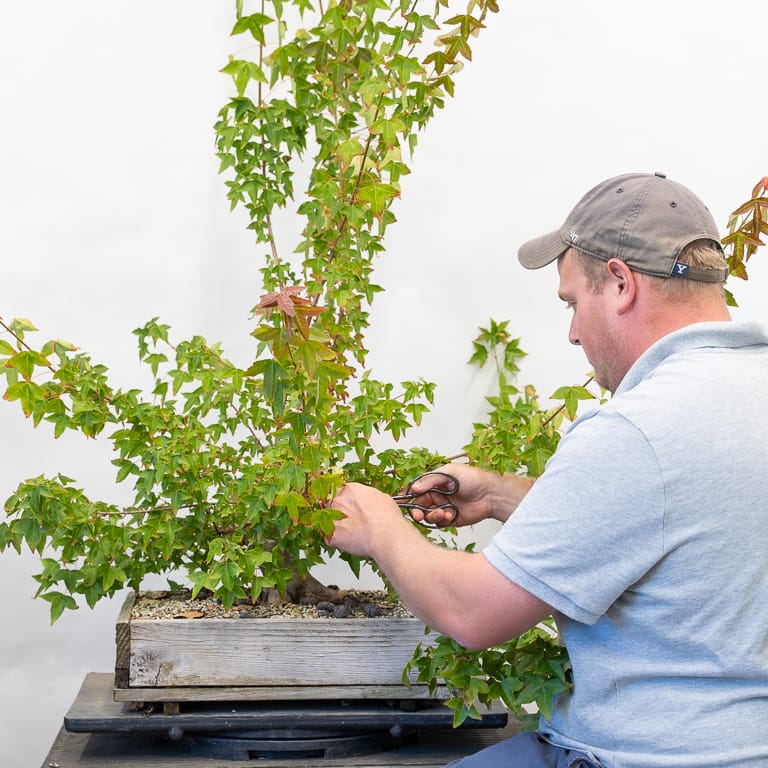
Andrew starting to defoliate the tree
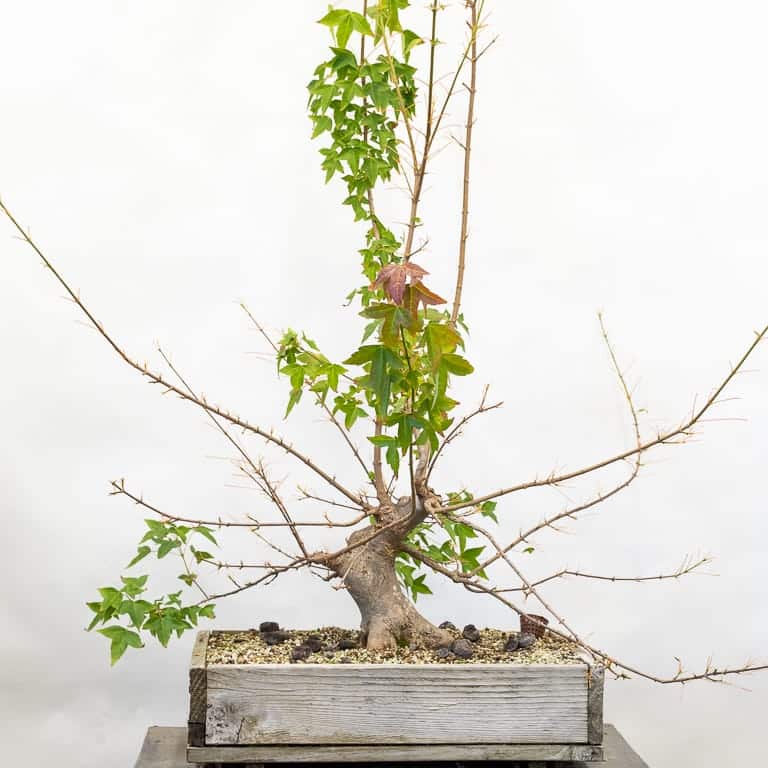
After defoliating most of the branches
The next step is to remove or reduce unnecessary branches. If a branch has reached the desired thickness, making it shorter will encourage lateral bud development and slow down thickening.
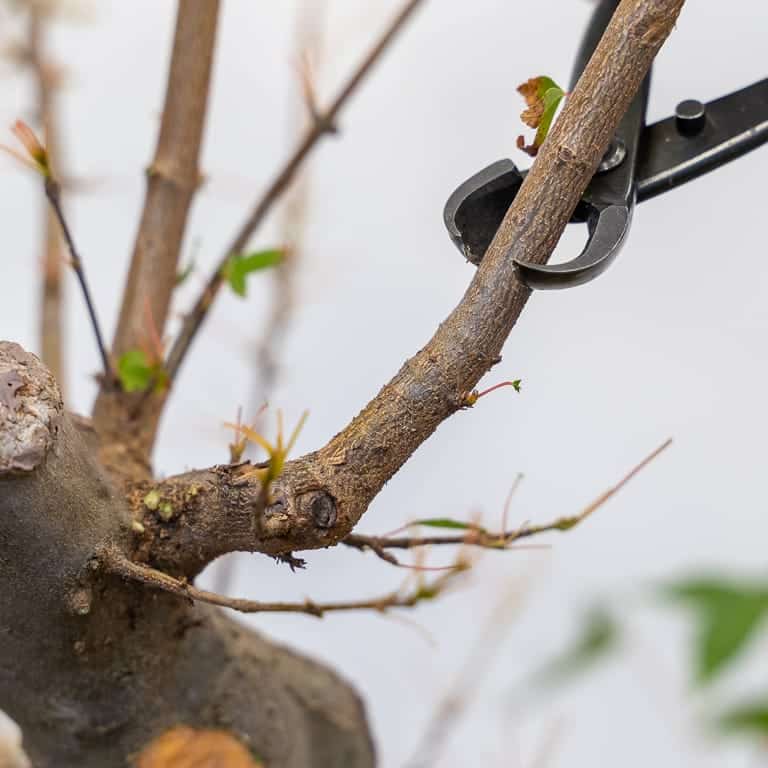
Shortening a branch that has reached the desired thickness
Other branches aren’t needed for the design. Andrew noted that the branch below is a good example of a branch that grows from the inside of a curve along the trunk. By preferring branches that grow on the outside of curves, we can enhance the tree’s natural curves instead of filling the voids created by movement in the trunk.
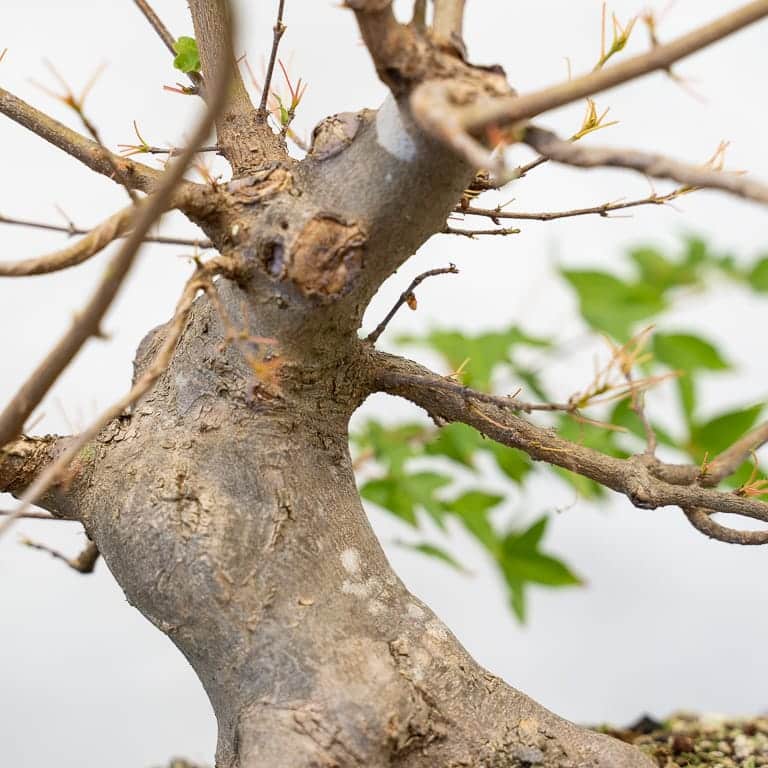
Branch growing on the inside of a curve
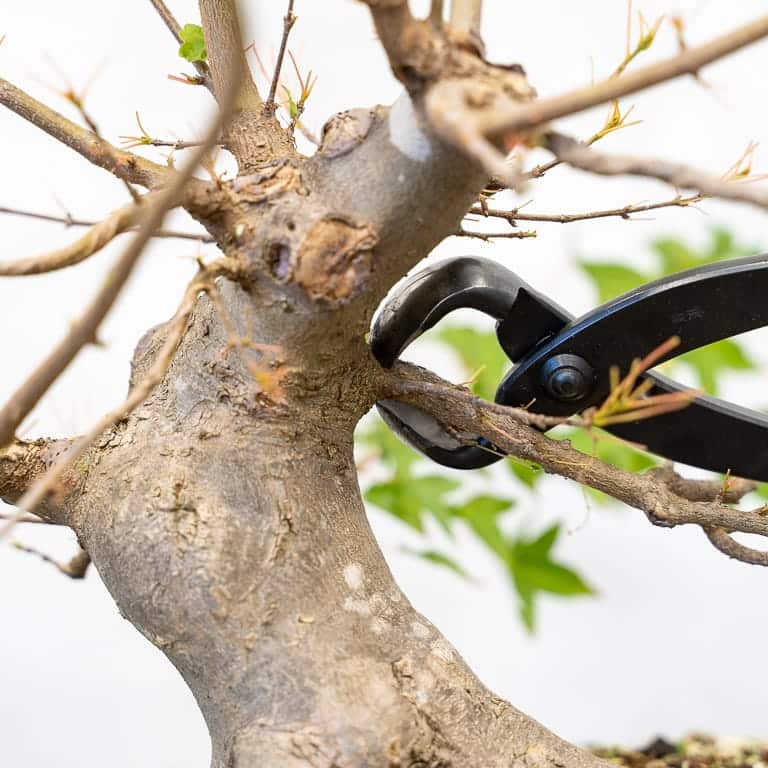
Cutting the branch
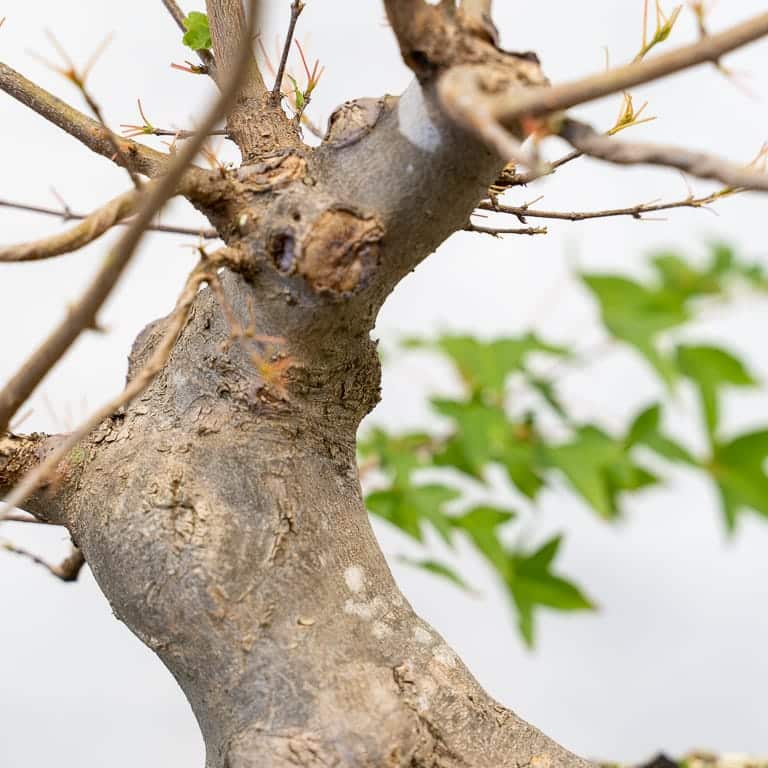
After removing the branch
Andrew cleaned the wound by enlarging it and making sure the edges were smooth before applying cut paste with a brush.
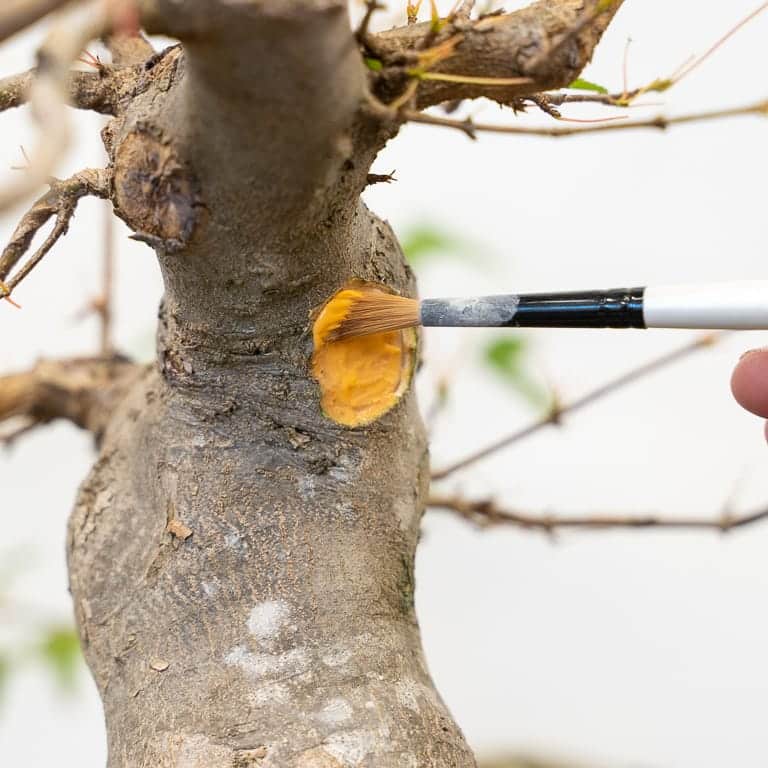
Applying Top Jin M to the wound
Andrew next turned his attention to a large elbow half-way up the trunk. A sacrifice branch had created reverse taper in the area that can be removed by repeated cuts with a knob cutter.
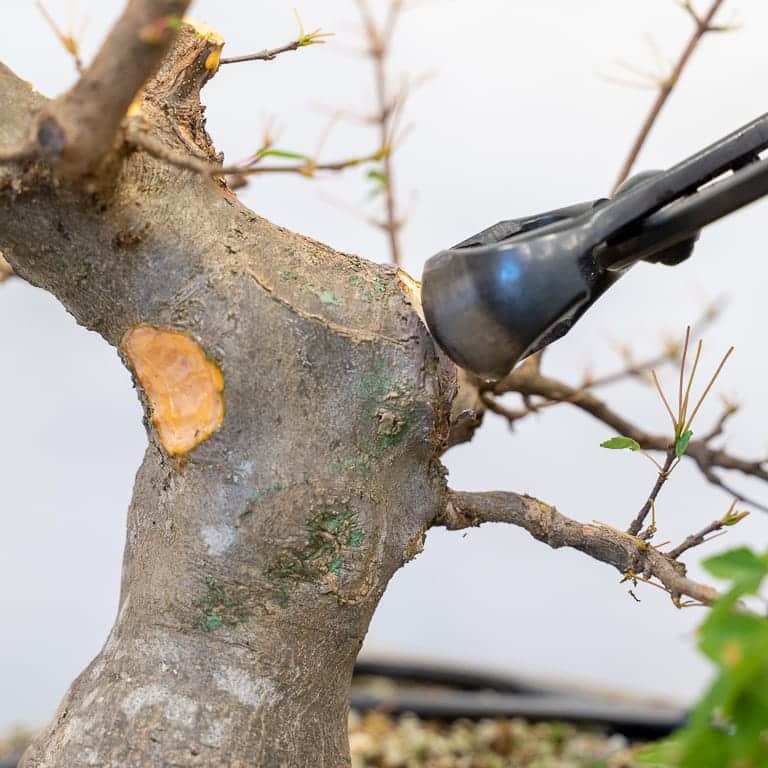
Reducing a large elbow
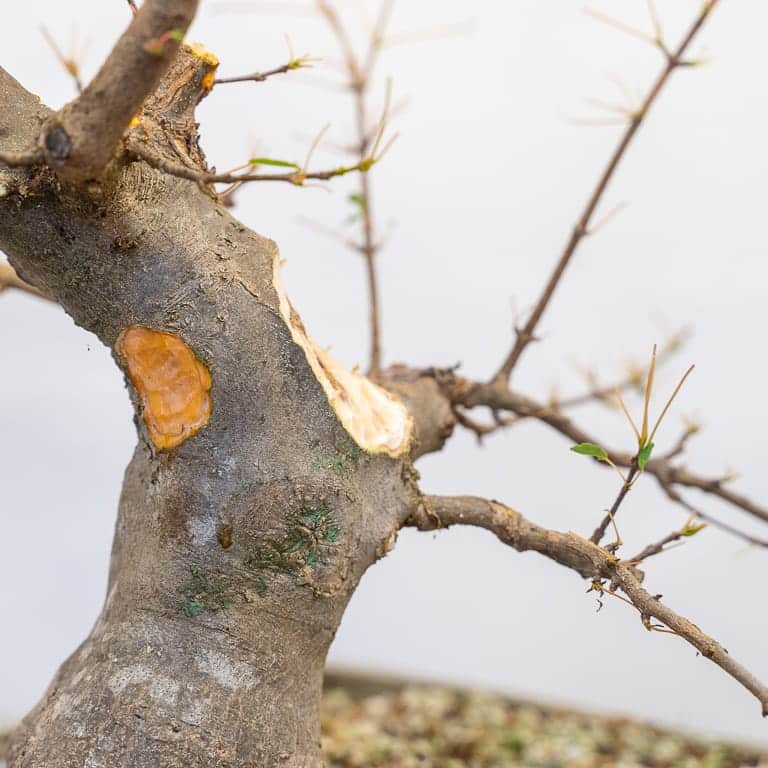
After reducing the large elbow
Here’s what the tree looked like when cutback was complete.
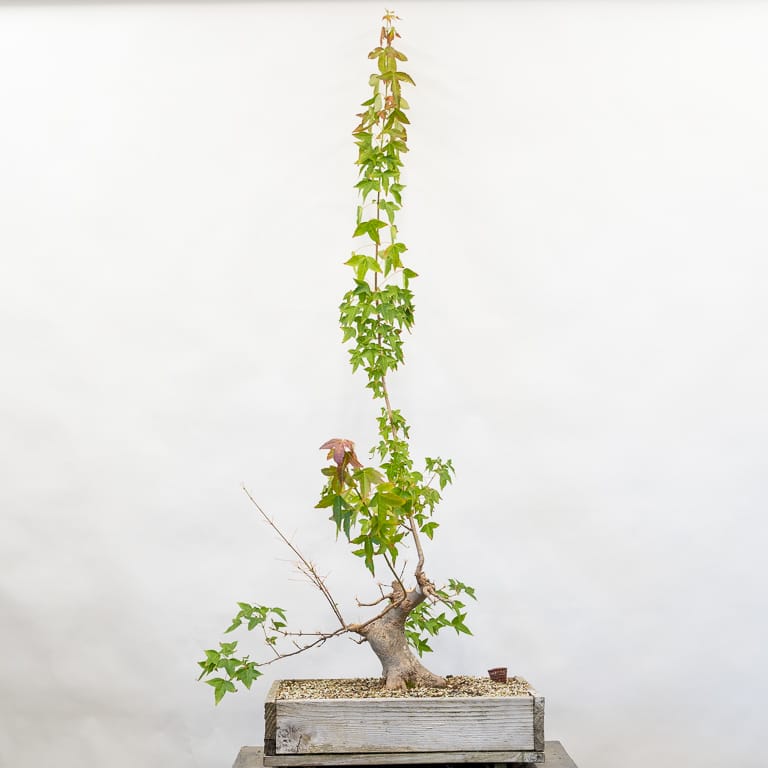
Work complete – 54″ tall
Looking closer at the trunk, Andrew made a styling suggestion. Because the lower part of the trunk is narrow and the surface roots are uneven, it will be hard to create a compelling small tree. In cases like this, stretching out the line of the trunk by developing the tree into a slightly larger bonsai can reduce the impact of the tree’s imperfections. The resulting tree wouldn’t be much bigger – maybe an extra two-to-three inches total – but its flaws would take up less visual mass when compared with the rest of tree as a whole.
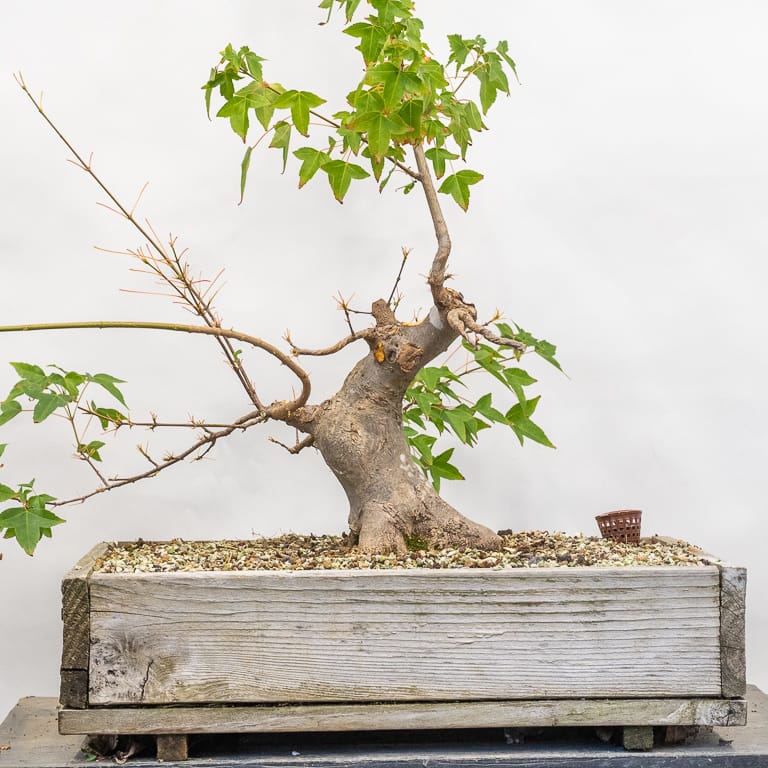
The future tree will be close to 12″ tall
For more information about Andrew, check out his website, Rakuyo Bonsai, and subscribe to his blog!
Subscribe to Bonsai Tonight
New Posts Delivered Every Tuesday and Friday
Brad says
Thanks
I have heard that covering a cut/wound with paste is detrimental to healing.
Jonas Dupuich says
Hi Brad – I have yet to see a case where cut paste was detrimental to callus formation or wound closure, and it offers the benefit of preventing the exposed wood to drying out. I also know that different cut pastes have different effects on different species. Hope this helps!
Josh R. says
Hi Jonas,
In regards to the branch growing from the inside of the curve, wouldn’t it be beneficial to remove said branch as soon as it emerges therefor minimizing the scar? Or is there a benefit to letting it grow, even though it’s in a bad location and knowing that you’re going to cut it off later?
Thanks.
Jonas Dupuich says
Hi Josh – great question about the low branch! I don’t like that the branch emerges toward the back at a point in the center of the curve, but I like that there’s foliage at that lower point because it helps the silhouette and it breaks up the curve from the base of the tree all the way up to the top on the left side. I may remove it when the upper branches lengthen and can fill that spot. Fortunately, because it emerges from the back corner of the trunk, the scar would not be too visible from the current front. Thanks for asking!